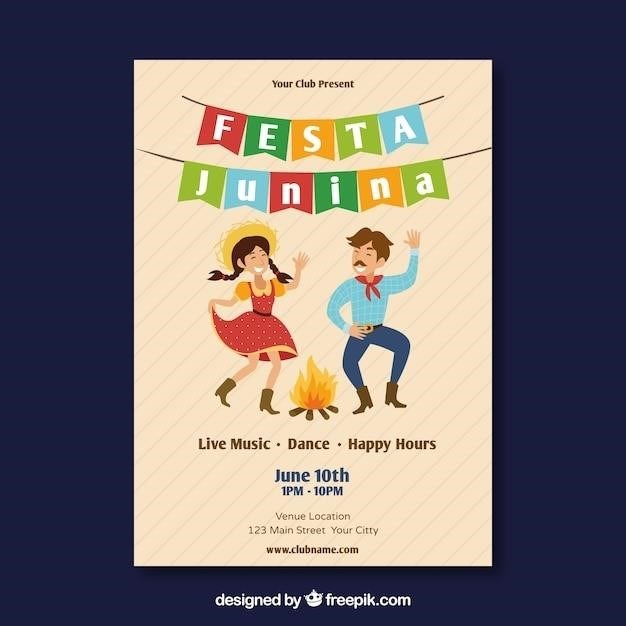Call of Cthulhu Book PDF: A Comprehensive Guide (Updated 12/09/2025)
Today‚ December 9th‚ 2025‚ investigators seek Call of Cthulhu resources in PDF format. Numerous options exist‚ from official sources to digital distributors like DriveThruRPG‚ offering adventures and core rulebooks.
“The Realm of Shadows” and “Nameless Horrors” are popular adventures available digitally. Caution is advised when utilizing free resources‚ like those found on Pdfcoffee.com‚ due to potential risks;
What is Call of Cthulhu?
Call of Cthulhu is a tabletop role-playing game (RPG) rooted in the cosmic horror fiction of H.P. Lovecraft. Unlike many RPGs focused on heroic fantasy‚ Call of Cthulhu centers on investigation‚ uncovering terrifying secrets‚ and the fragility of the human mind when confronted with the vast‚ indifferent universe and ancient‚ powerful entities.
Players typically assume the roles of investigators – ordinary people thrust into extraordinary circumstances. These investigators delve into mysteries involving cults‚ strange occurrences‚ and the looming presence of the Great Old Ones. The game emphasizes atmosphere‚ suspense‚ and a sense of dread‚ rather than direct combat.

The core experience revolves around skill-based checks‚ utilizing a percentile dice system. Success isn’t guaranteed‚ and even successful investigations can come at a cost‚ often involving sanity loss. The game’s appeal lies in its immersive storytelling and the psychological impact of confronting the unknowable.
Finding resources‚ including the core rulebook‚ in PDF format is common for players seeking convenient access to the game’s rules and adventures. Digital distribution platforms offer a wide selection of Call of Cthulhu materials‚ catering to both new and experienced investigators.

The History of the Call of Cthulhu Roleplaying Game
Call of Cthulhu’s journey began in 1981‚ pioneered by Chaosium Inc.‚ transforming Lovecraft’s literary universe into an interactive roleplaying experience. Initially inspired by the Dungeons & Dragons system‚ it quickly diverged‚ prioritizing investigation and sanity mechanics over combat prowess.
Early editions relied heavily on supplements expanding the Mythos‚ drawing from Lovecraft’s stories and those of his contemporaries. The game gained a dedicated following‚ celebrated for its atmospheric storytelling and unique approach to horror. The availability of materials in PDF format began to emerge with the rise of digital distribution.
Throughout the 1990s and 2000s‚ Call of Cthulhu saw various editions‚ refining its rules and expanding its setting. Chaosium maintained its commitment to the source material‚ ensuring the game remained faithful to Lovecraftian themes.
The 7th edition‚ released in 2014‚ brought significant updates to the system‚ streamlining gameplay while preserving the core experience. Today‚ players can readily access numerous Call of Cthulhu books and adventures as PDF downloads‚ ensuring the game’s continued accessibility and enduring legacy.
Understanding the Core Rulebook
The Call of Cthulhu Core Rulebook‚ often available as a PDF‚ is the foundational text for playing the game. It details character creation‚ skill systems‚ and the crucial Sanity mechanic – representing investigators’ mental state when confronting cosmic horrors.
Within its pages‚ you’ll find comprehensive rules for investigation‚ combat (though discouraged as a primary solution)‚ and spellcasting. The book meticulously outlines the game’s setting‚ detailing the 1920s era and the encroaching influence of the Mythos. Understanding the core mechanics is vital for both players and Keepers (the game master).
A significant portion of the rulebook is dedicated to the Mythos itself‚ introducing key entities like Cthulhu‚ Azathoth‚ and Yog-Sothoth. The PDF version allows for easy searching of these crucial elements.
The rulebook also provides guidance on running scenarios‚ crafting compelling narratives‚ and managing the game’s inherent tension. Accessing the core rulebook in PDF format offers convenience and portability for investigators delving into the darkness.
Where to Find Call of Cthulhu PDFs Legally

Acquiring Call of Cthulhu PDFs legally ensures support for the creators at Chaosium Inc. and avoids potential security risks associated with unofficial sources. Several reputable platforms offer authorized digital copies of the core rulebook and numerous supplements.
Chaosium’s official website is the primary and most reliable source. DriveThruRPG stands as a major digital distributor‚ boasting an extensive catalog of Call of Cthulhu materials in PDF format‚ including adventures like “The Realm of Shadows” and “Nameless Horrors”.
Other legal online retailers may also carry Call of Cthulhu PDFs‚ but verifying their legitimacy is crucial. Always look for official licensing or direct partnerships with Chaosium.
Prioritizing legal sources guarantees you receive complete‚ accurate‚ and DRM-free PDFs‚ enhancing your gaming experience. Supporting official channels helps sustain the development of future Call of Cthulhu content and ensures the longevity of this beloved roleplaying game.
Chaosium Website – Official Source
Chaosium.com serves as the definitive‚ official source for all things Call of Cthulhu‚ including a comprehensive selection of PDFs. Directly purchasing from Chaosium guarantees you receive legitimate‚ high-quality digital products and directly supports the game’s continued development.
The website offers the core rulebook‚ investigator handbook‚ and a vast library of scenarios and supplements in PDF format. You’ll find everything from classic adventures to newer releases‚ catering to both veteran Keepers and newcomers alike.
PDFs purchased from Chaosium are typically DRM-free‚ allowing for flexible use across various devices. The site frequently features sales and promotions‚ providing opportunities to expand your Call of Cthulhu library at discounted prices.
Navigating the Chaosium website is straightforward‚ with clear categorization and search functionality. It’s the most secure and reliable method for obtaining Call of Cthulhu PDFs‚ ensuring an authentic and enjoyable gaming experience.
DriveThruRPG – A Major Digital Distributor
DriveThruRPG stands as a prominent digital marketplace‚ offering an extensive catalog of Call of Cthulhu PDFs alongside other roleplaying game materials. It’s a convenient hub for investigators seeking a wide variety of content from numerous publishers‚ including Chaosium itself.
You can find the core rulebook‚ numerous scenarios like “The Realm of Shadows” and “Nameless Horrors”‚ and a wealth of supplementary materials available for immediate PDF download. DriveThruRPG often hosts sales and bundles‚ presenting opportunities to acquire Call of Cthulhu content at reduced prices.
The platform supports various PDF reading software and devices‚ ensuring compatibility for most users. DriveThruRPG provides a robust system for managing your digital library and offers customer support should you encounter any issues with your purchases.
While offering a vast selection‚ always verify the publisher to ensure legitimacy. DriveThruRPG is a trusted source‚ but it’s prudent to confirm the origin of the PDF before downloading. It’s a fantastic resource for expanding your Call of Cthulhu collection.
Other Legal Online Retailers
Beyond the Chaosium website and DriveThruRPG‚ several other legitimate online retailers offer Call of Cthulhu PDFs. These platforms provide alternative avenues for acquiring the core rulebook‚ adventures like “The Realm of Shadows” and “Nameless Horrors”‚ and supplementary materials.
Retailers specializing in digital books and gaming content frequently stock Call of Cthulhu products. These include platforms offering a diverse range of PDFs‚ often with compatibility across various devices and reading software. Checking these sites can reveal exclusive deals or regional pricing advantages.
When purchasing‚ always confirm the retailer’s legitimacy to avoid encountering pirated or unauthorized copies. Look for established businesses with secure payment gateways and clear return policies. Supporting official channels ensures the continued development of Call of Cthulhu content.
Exploring these options expands your access to Call of Cthulhu resources‚ providing flexibility and convenience. Remember to compare prices and consider any associated digital rights management (DRM) restrictions before making a purchase.
Free Call of Cthulhu Resources (Caution Advised)
The internet offers numerous sources for free Call of Cthulhu resources‚ including PDFs of the core rulebook and adventures. However‚ exercising extreme caution is paramount when utilizing these options. Many sites hosting such content operate in legally gray areas‚ potentially distributing copyrighted material without authorization.
Websites like Pdfcoffee.com present a risk of downloading malware or viruses disguised as game materials. The quality of these free PDFs is often substandard‚ featuring incomplete files‚ scanning errors‚ or altered content. Furthermore‚ supporting these sources undermines the creators and publishers of Call of Cthulhu.
While the allure of free content is understandable‚ prioritizing legal and ethical acquisition methods is crucial. Consider utilizing free introductory materials offered by Chaosium or exploring legitimate online retailers for discounted products. Remember that free resources may lack updates or errata.
Always scan downloaded files with reputable antivirus software and be wary of sites requesting personal information. Opting for official channels ensures a safe and high-quality gaming experience‚ supporting the continued creation of Call of Cthulhu adventures.
Pdfcoffee.com and Similar Sites – Risks and Considerations
Pdfcoffee.com and comparable websites offering free Call of Cthulhu PDF downloads present significant risks to users. These platforms frequently host pirated materials‚ violating copyright laws and potentially exposing downloaders to legal repercussions‚ however minimal. The primary concern revolves around malware and viruses often embedded within these files.
Downloading from such sources carries a high probability of infecting your device with harmful software‚ compromising your personal data and system security. The quality of the PDFs themselves is often severely compromised‚ featuring incomplete pages‚ poor scanning quality‚ and missing content‚ hindering gameplay.
Furthermore‚ these sites often employ deceptive advertising and pop-up schemes‚ further increasing the risk of malware exposure. Supporting these platforms financially benefits those engaged in illegal distribution‚ undermining the legitimate creators of Call of Cthulhu.
It’s crucial to prioritize safety and legality. Consider official sources like Chaosium or authorized distributors like DriveThruRPG for a secure and high-quality gaming experience. Always utilize robust antivirus software and exercise extreme caution when browsing unverified websites.
The Original “Call of Cthulhu” Story by H.P. Lovecraft
H.P. Lovecraft’s seminal short story‚ “The Call of Cthulhu‚” published in 1928‚ forms the bedrock of the entire Call of Cthulhu roleplaying game. The narrative unfolds through a series of discovered documents – a deceased great-uncle’s papers‚ a sailor’s account‚ and a police report – revealing fragments of a terrifying truth.
The story details the awakening of the Great Old One‚ Cthulhu‚ a monstrous entity imprisoned beneath the Pacific Ocean in the sunken city of R’lyeh. Lovecraft masterfully builds suspense and dread‚ hinting at cosmic horrors beyond human comprehension. The tale explores themes of forbidden knowledge‚ the insignificance of humanity‚ and the terrifying vastness of the universe.
Interestingly‚ no book had ever truly hinted at such horrors before Lovecraft’s creation. The story’s impact is profound; it established key elements of the Cthulhu Mythos‚ influencing countless works of horror and fantasy. While a PDF version of the story is readily available‚ experiencing the original text is vital for understanding the game’s core inspiration.

The story’s enduring power lies in its ability to evoke a sense of cosmic dread and the unsettling realization that humanity’s understanding of reality is profoundly limited.
Analyzing the Themes and Influences of the Story
“The Call of Cthulhu” delves into profound themes of cosmic horror‚ the fragility of human sanity‚ and the limitations of human knowledge. Lovecraft expertly portrays humanity as insignificant in the face of ancient‚ powerful entities‚ a concept central to the Call of Cthulhu roleplaying experience. The story’s influence extends beyond horror‚ impacting philosophical explorations of existential dread.
The narrative draws heavily from various sources‚ including maritime folklore‚ anthropology‚ and a deep-seated fear of the unknown. Lovecraft’s own anxieties and worldview are woven into the fabric of the tale‚ creating a uniquely unsettling atmosphere. The story’s fragmented narrative structure‚ presented through discovered documents‚ enhances the sense of mystery and dread.
Finding a PDF copy allows easy access to dissect these themes‚ but understanding the historical context is crucial. The story reflects anxieties of the early 20th century‚ including fears of societal collapse and the loss of traditional values.
Ultimately‚ “The Call of Cthulhu” is a cautionary tale about the dangers of seeking forbidden knowledge and confronting realities beyond human comprehension.
The Mythos: Key Entities and Concepts
The Cthulhu Mythos‚ central to the Call of Cthulhu experience‚ presents a pantheon of immensely powerful‚ ancient beings. Accessing a PDF of Lovecraft’s stories and related materials is key to understanding these entities and the cosmic horror they embody. These Great Old Ones‚ like Cthulhu‚ Azathoth‚ and Yog-Sothoth‚ exist beyond human comprehension‚ often driving individuals to madness.
Key concepts include the insignificance of humanity‚ the vastness of cosmic time‚ and the existence of dimensions beyond our own. The Mythos isn’t a structured religion‚ but rather a collection of fragmented lore‚ discovered through forbidden texts and unsettling encounters. Investigators often stumble upon clues within PDF documents mirroring this fragmented knowledge.
The influence of these entities isn’t direct control‚ but rather a subtle corruption of reality and the human psyche. Dreams‚ visions‚ and ancient artifacts serve as conduits for their influence.

Understanding these core elements is vital for both players and Keepers in the Call of Cthulhu roleplaying game‚ enriching the narrative and heightening the sense of dread.
Cthulhu – The Great Old One
Cthulhu‚ arguably the most iconic entity within the Mythos‚ is a colossal‚ ancient being depicted as having an octopus-like head‚ dragon-like wings‚ and a vaguely humanoid body. Detailed descriptions are readily available in Call of Cthulhu sourcebooks‚ often accessible as PDF downloads.

Imprisoned in the sunken city of R’lyeh in the Pacific Ocean‚ Cthulhu exerts a psychic influence over susceptible minds‚ inducing dreams and madness. His awakening signals a catastrophic shift in reality‚ promising chaos and destruction. Investigators frequently encounter clues relating to Cthulhu’s impending return within digitized texts – PDFs of occult journals and forgotten lore.
The original “Call of Cthulhu” story by H.P. Lovecraft details the terrifying discovery of Cthulhu’s cult and the horrifying implications of his existence.
Cthulhu represents the ultimate cosmic indifference‚ a being utterly uncaring about humanity’s fate. His power stems not from malice‚ but from his sheer alienness and the limitations of human perception. Studying PDF resources enhances understanding of this terrifying entity.
Azathoth – The Blind Idiot God
Azathoth‚ the “Blind Idiot God‚” represents the primal chaos at the heart of existence within the Call of Cthulhu Mythos. Unlike Cthulhu’s deliberate malice‚ Azathoth’s power is unintentional‚ a consequence of his mindless dreaming. Detailed lore regarding Azathoth is often found within PDF versions of advanced rulebooks and supplements.
Surrounded by dancing‚ flute-playing entities who lull him into continued slumber‚ Azathoth’s awakening would unravel reality itself. He is the source of all creation‚ yet utterly unaware of it‚ a terrifying concept explored extensively in Lovecraftian horror. Investigators researching Azathoth often rely on digitized texts – PDFs of forbidden grimoires and fragmented accounts.
The very fabric of the universe is maintained by the hypnotic rhythm surrounding Azathoth‚ a precarious balance easily disrupted.
Understanding Azathoth requires grappling with concepts beyond human comprehension‚ a challenge often aided by the comprehensive information contained within Call of Cthulhu PDF resources. His existence is a testament to the uncaring nature of the cosmos.
Yog-Sothoth – The Gate and the Key
Yog-Sothoth‚ described as “The Gate and the Key‚” is a profoundly alien entity in the Call of Cthulhu Mythos‚ existing simultaneously in all times and dimensions. Information about Yog-Sothoth‚ often complex and fragmented‚ is frequently accessible through PDF versions of supplemental rulebooks and source materials.
He is not a being to be worshipped or understood‚ but rather a fundamental aspect of the universe’s structure. Yog-Sothoth is the gateway to other realms‚ and possesses knowledge of all things‚ past‚ present‚ and future. Investigators seeking to understand him often pore over digitized occult texts – PDF scans of ancient manuscripts and forbidden lore.
Contacting Yog-Sothoth is incredibly dangerous‚ potentially leading to madness or worse. The infamous “Yellow Sign” is often associated with his influence‚ and details regarding its significance are often found within Call of Cthulhu PDFs.
His very nature defies human comprehension‚ representing the ultimate boundary of knowledge. Exploring Yog-Sothoth’s mysteries is a central theme in many Call of Cthulhu campaigns.
Exploring Different Call of Cthulhu Books & Supplements
Beyond the core rulebook‚ a vast library of Call of Cthulhu books and supplements expands the gaming experience. Many of these are readily available as PDF downloads‚ offering investigators and Keepers a wealth of new scenarios‚ lore‚ and character options.

“The Realm of Shadows‚” a popular starter adventure‚ frequently appears as a PDF‚ ideal for newcomers. “Nameless Horrors” provides six standalone adventures‚ also commonly found in digital format. These PDFs often include pre-generated characters and maps‚ streamlining game preparation.

Chaosium’s website and DriveThruRPG are primary sources for these PDFs‚ offering both individual supplements and collections. Investigators can find materials focusing on specific eras‚ like the Victorian era or the 1920s‚ or delve into particular Mythos entities.
Digital formats allow for easy searching and annotation‚ enhancing research during gameplay. The convenience of PDFs makes expanding your Call of Cthulhu library accessible and affordable.
“The Realm of Shadows” – A Popular Starter Adventure
“The Realm of Shadows” stands as a highly recommended introductory adventure for new Call of Cthulhu players and Keepers. Frequently available as a PDF download‚ it provides a streamlined and engaging experience‚ easing newcomers into the game’s investigative style and Lovecraftian horror.
This adventure is designed to teach the core mechanics of the game organically‚ guiding players through investigation‚ sanity checks‚ and combat. The PDF version often includes pre-generated characters‚ simplifying setup and allowing immediate play. Maps and handouts are also typically included‚ enhancing immersion.
Investigators find themselves drawn into a mystery surrounding a haunted house and a sinister cult. The scenario balances exploration‚ puzzle-solving‚ and encounters with unsettling phenomena; It’s a perfect introduction to the themes and atmosphere of the Call of Cthulhu universe.
Obtaining “The Realm of Shadows” as a PDF is convenient and cost-effective‚ making it an ideal starting point for anyone curious about this iconic roleplaying game.
“Nameless Horrors” – Six Dreadful Adventures
“Nameless Horrors”‚ a collection of six standalone adventures for Call of Cthulhu‚ offers seasoned investigators and Keepers a diverse range of chilling scenarios. Easily accessible as a PDF download‚ this compilation provides hours of Lovecraftian investigation and suspense.
Each adventure within “Nameless Horrors” presents a unique mystery‚ ranging from haunted locales to encounters with bizarre cults and otherworldly entities. The PDF format allows for easy reference during gameplay‚ with readily available maps‚ NPC details‚ and crucial clues.
These adventures are designed for varying levels of experience‚ offering a blend of classic Call of Cthulhu tropes and innovative scenarios. Investigators will face moral dilemmas‚ unravel ancient secrets‚ and confront the terrifying realities of the Mythos.
The convenience of a PDF allows Keepers to quickly prepare sessions and adapt the adventures to their group’s preferences. “Nameless Horrors” is a valuable addition to any Call of Cthulhu library‚ promising dread and intrigue.
PDF Format and Compatibility

PDF (Portable Document Format) has become the standard for distributing Call of Cthulhu books and supplements digitally. This format ensures consistent presentation across various devices and operating systems‚ preserving the original layout and artwork.
Call of Cthulhu PDF files are generally compatible with most modern computers‚ tablets‚ and smartphones. Readers like Adobe Acrobat Reader (free to download) are commonly used to view and interact with these files. Many PDF viewers also offer features like zooming‚ searching‚ and annotation.
The benefit of PDFs lies in their portability and accessibility. Investigators and Keepers can easily carry entire libraries of Call of Cthulhu materials on a single device‚ making game preparation and play more convenient.
However‚ some older devices or PDF viewers may experience compatibility issues. Ensuring you have the latest version of your PDF reader is recommended. Digital retailers often specify minimum system requirements for their PDF products.


















































